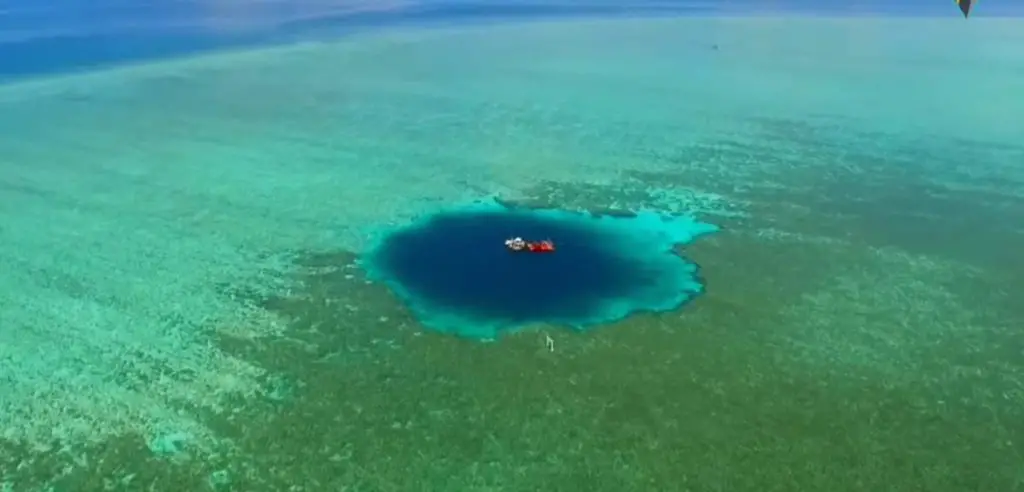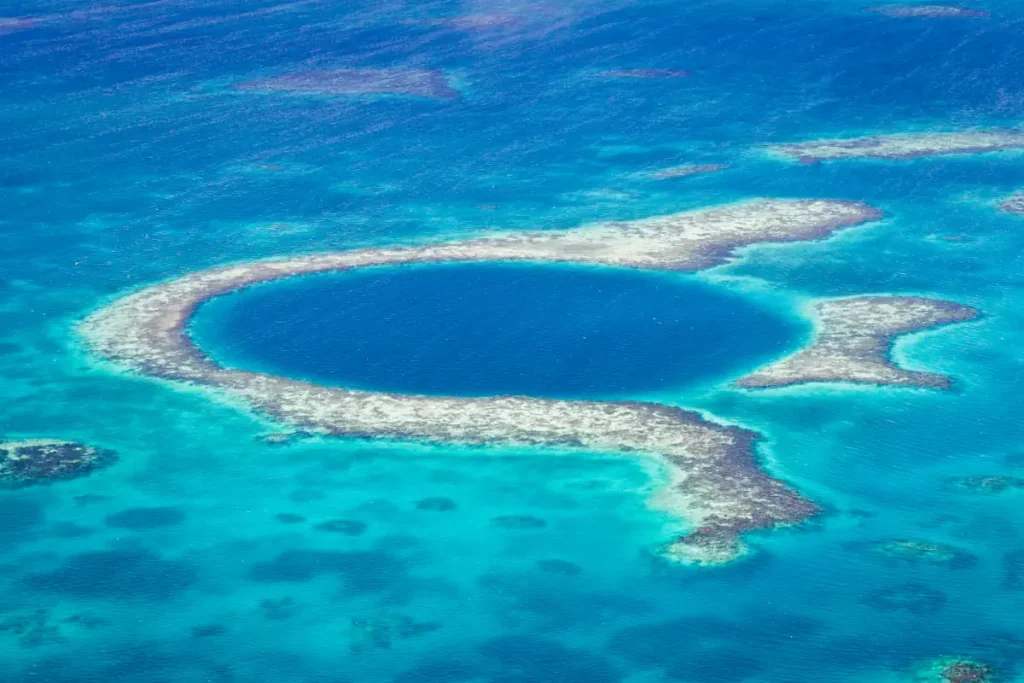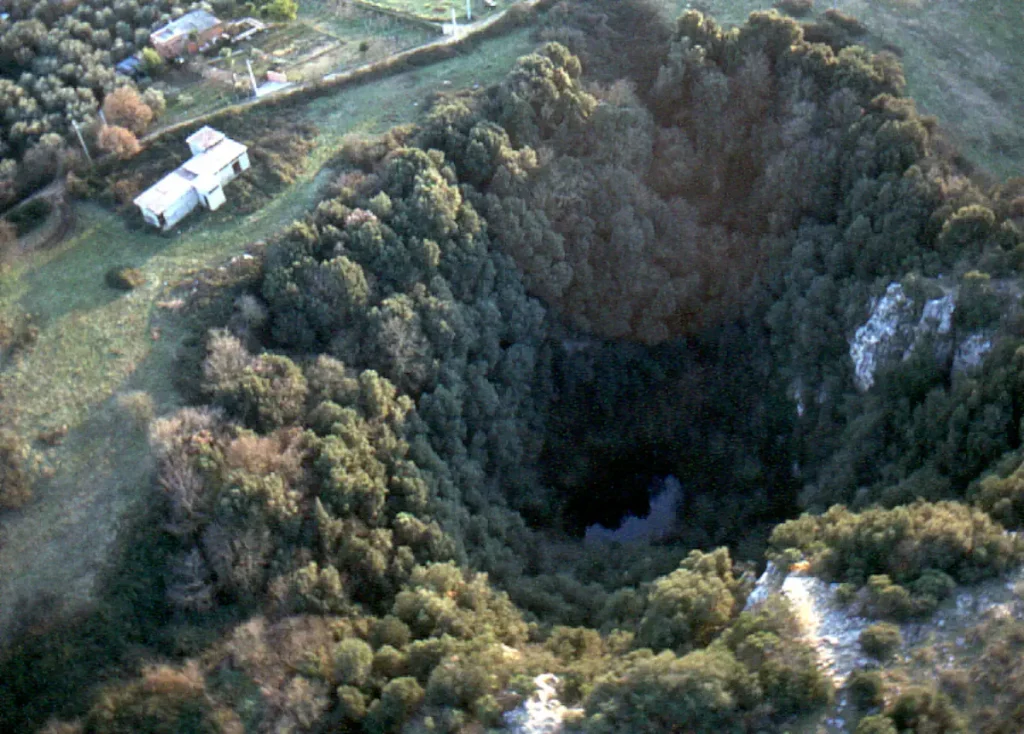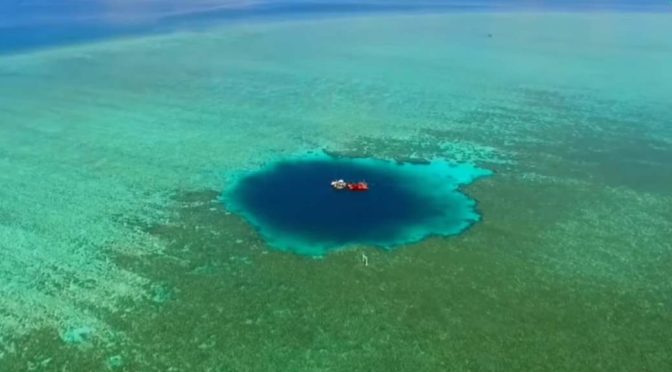The world’s deepest “blue hole” has been discovered in
Dragon Hole
Dragon Hole, also known as the “Blue Dragon Hole,” is located in the South China Sea, near the Paracel Islands.
The specific exploration and scientific documentation that brought Dragon Hole to international attention occurred during an expedition in 2016. The Sansha Ship Course Research Institute for Coral Protection, along with other research organizations, used advanced sonar equipment and underwater robots to measure the depth of the Dragon Hole accurately. They found it to be 300.89 meters (987.2 feet) deep, making it the world’s deepest known blue hole.
Local fishermen and sailors may have known about the existence of this blue hole for centuries, but it was the scientific measurements and media coverage in 2016 that led to its recognition as a significant geological feature on the global stage. The exploration also ignited interest in studying its unique environmental characteristics and the species that inhabit its depths.

What is a blue hole?
A blue hole is a large marine cavern or sinkhole, which is open to the surface and has developed in a bank or island composed of carbonate bedrock (limestone or coral reef). They are roughly circular, steep-walled depressions, and so named for the dramatic contrast between the dark blue, deep waters of their depths and the lighter blue of the shallows around them. The term “blue hole” comes from the striking deep blue color that is often seen when viewing the hole from above, a result of the depth and clarity of the water.
Water circulation in Blue holes’ is poor, and they are commonly anoxic (depleted of dissolved oxygen) below a certain depth; this environment is unfavorable for most sea life, and they can support large numbers of bacteria.
Great Blue Hole (Belize): the most famous blue hole
The most famous Blue Hole is the Great Blue Hole, a giant submarine sinkhole off the coast of Belize, near the center of the Lighthouse Reef, a small atoll 70 km (43 miles) from mainland Belize and Belize City. It is really big in diameter, but compared to the Dragon Hole, it is not that deep: it is approximately 318 meters (1,043 feet) across and 124 meters (407 feet) deep. Its stunningly clear blue waters and unique geological features have made it famous worldwide.
Great Blue Hole’s near-perfect circular shape adds to its allure as a natural phenomenon. Geologically, the Great Blue Hole started as a limestone cave system during the last Ice Age when sea levels were much lower. Over time, the caves flooded, and the roof collapsed, forming the hole we see today.

Although the blue hole itself isn’t teeming with marine life, the surrounding reef is filled with various species of fish, corals, and other marine organisms. Within the depths of the hole, divers can discover unique stalactite and stalagmite formations, remnants of its origins as a cave system.
The Great Blue Hole has become a popular spot among recreational scuba divers, drawn to its unique formations and the challenge of diving in a deep, underwater cavern. The clear waters provide fantastic visibility, and the site’s beauty led Jacques Cousteau to declare it one of the top five scuba diving sites in the world in 1971.
It’s also a destination for tourists interested in snorkeling and boat tours, and its dark blue center surrounded by turquoise waters and coral reefs creates a stunning aerial view. The Great Blue Hole is part of the Belize Barrier Reef Reserve System, designated as a UNESCO World Heritage Site in 1996. This recognition has spurred ongoing efforts to preserve this unique natural wonder and its surrounding environment.
In addition to being a geological marvel and an essential site for tourism, the Great Blue Hole holds significant scientific value. Its history and unique features provide valuable insights into Earth’s historical climate changes, geological processes, and karst developments. Research on this sinkhole contributes to a broader understanding of the Earth’s natural phenomena and history, symbolizing the rich natural heritage and beauty of Belize.
How blue holes were formed
Blue holes formed during past ice ages, when the sea level was as much as 100-120 meters (330-390 feet) lower than at present. At those times, these formations were targets of the same erosion from rain and chemical weathering common in all limestone-rich terrains; this ended once they were submerged at the end of the ice age.
Their formation is a complex process that takes place over thousands of years and involves various geological and climatic factors. Here’s an overview of how blue holes are typically formed:
- Formation of Limestone or Carbonate Platforms: Blue holes often begin in areas where the bedrock consists mainly of limestone or other carbonate rocks. These formations can be part of coral reefs or other shallow marine environments rich in calcium carbonate.
- Chemical Weathering: Rainwater, slightly acidic due to dissolved carbon dioxide, seeps into the ground and reacts with the calcium carbonate in the limestone. This process dissolves the rock slowly, creating cracks and fissures. Over time, these small openings can enlarge, forming underground cavities and caves.
- Physical Erosion: Alongside chemical weathering, physical erosion by water flow contributes to enlarging these openings. As water moves through the rock, it carries away dissolved minerals and loosens particles, gradually widening the passages and chambers.
- Roof Collapse: Over many thousands of years, the cavities and caves within the limestone may grow so large that they become unstable. Portions of the roof may collapse, creating sinkholes or open chambers. These can fill with water, especially in areas close to the present or past sea level.
- Sea Level Changes: During ice ages, when significant amounts of water are stored in glaciers, sea levels are lower. This exposes more of the limestone to weathering and erosion. As ice melts and sea levels rise, the cavities and sinkholes may become flooded, creating underwater cave systems.
- Development into a Blue Hole: As the sea level continues to rise, a sinkhole or collapsed cave that has become flooded may turn into a blue hole. The surrounding water protects the hole from further weathering, preserving its structure. The depth of the blue hole, in contrast to the surrounding shallow waters, gives it a characteristic dark blue appearance when viewed from above.
- Unique Environmental Conditions: Inside a blue hole, the water can be stratified into layers with different temperatures and salinities. The lack of water circulation in the deeper parts can create anoxic conditions (absence of oxygen), preserving the geological features and even ancient fossils.
Blue holes are intricate and delicate structures, and their formation is highly dependent on the specific geological and climatic conditions of the region. They provide unique environments for marine life and valuable insights into geological history, making them significant sites for both scientific study and recreational exploration.
The deepest sinkholes in the world
There are several freshwater sinkholes on land that are even deeper than the Dragon Hole. These include the 335 meters (1,099 feet) Zacatón in Mexico and the 392 meters (1,286 feet) Pozzo del Merro in Italy.
Pozzo del Merro (English: the Well of Merro) is a flooded sinkhole in the countryside northeast of Rome, Italy. Situated at the bottom of an 80 m conical pit, at 392 meters (1,286 feet) it is the deepest underwater vertical cave in the world. In 2000 two ROVs (Remotely operated underwater vehicles) were sent to explore its depths; the first, the “Mercurio (Mercury)” reached its maximum operative depth of 210 meters (690 feet) without reaching the bottom.
The second ROV, “Hyball 300”, reached 310 meters (1,020 feet) without touching down either.
A third dive in 2002 with the more advanced “Prometeo” robot reached the bottom at 392 meters (1,286 feet) but discovered a narrow passage continuing horizontally. The sinkhole was formed by volcanic activity eroding the carbonate rock.

Sources
Blue hole on Wikipedia- Great Blue Hole on Wikipedia
- Pozzo del Merro on Wikipedia
- Moon Landings: All-Time List [1966-2025] - February 2, 2025
- What Is Max-Q and Why Is It Important During Rocket Launches? - January 16, 2025
- Top 10 Tallest Rockets Ever Launched [2025 Update] - January 16, 2025
